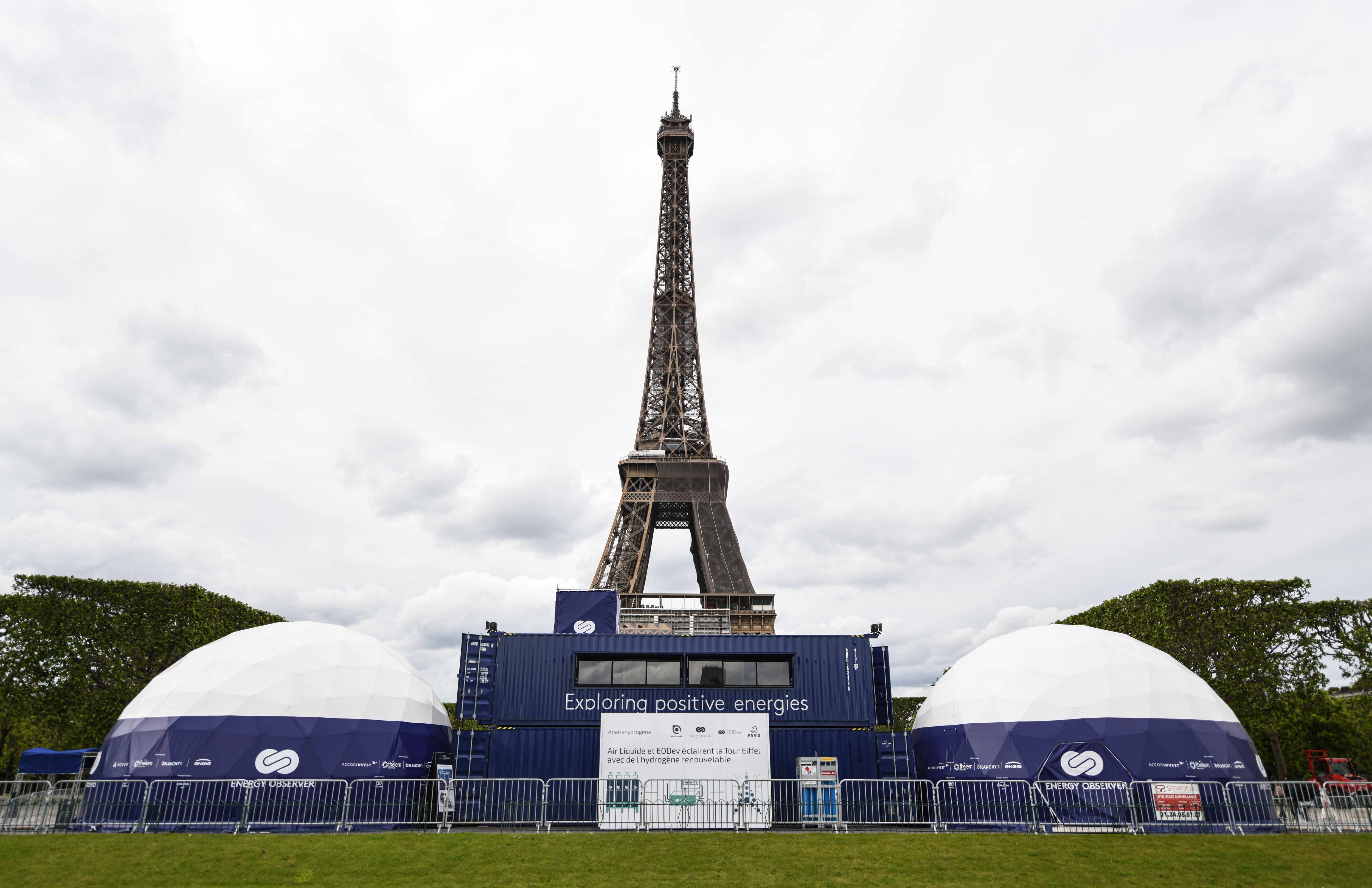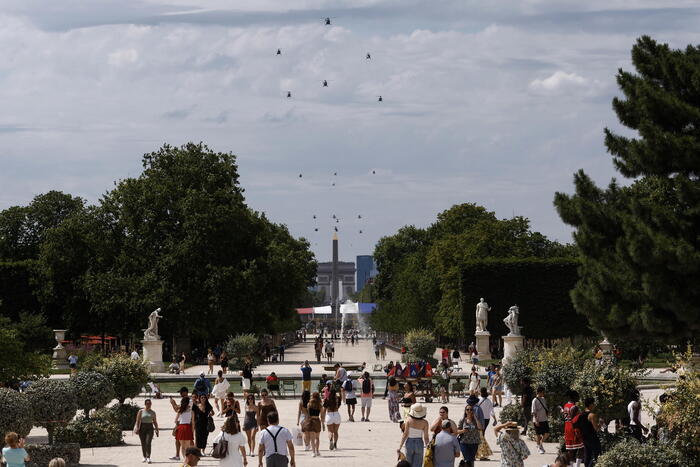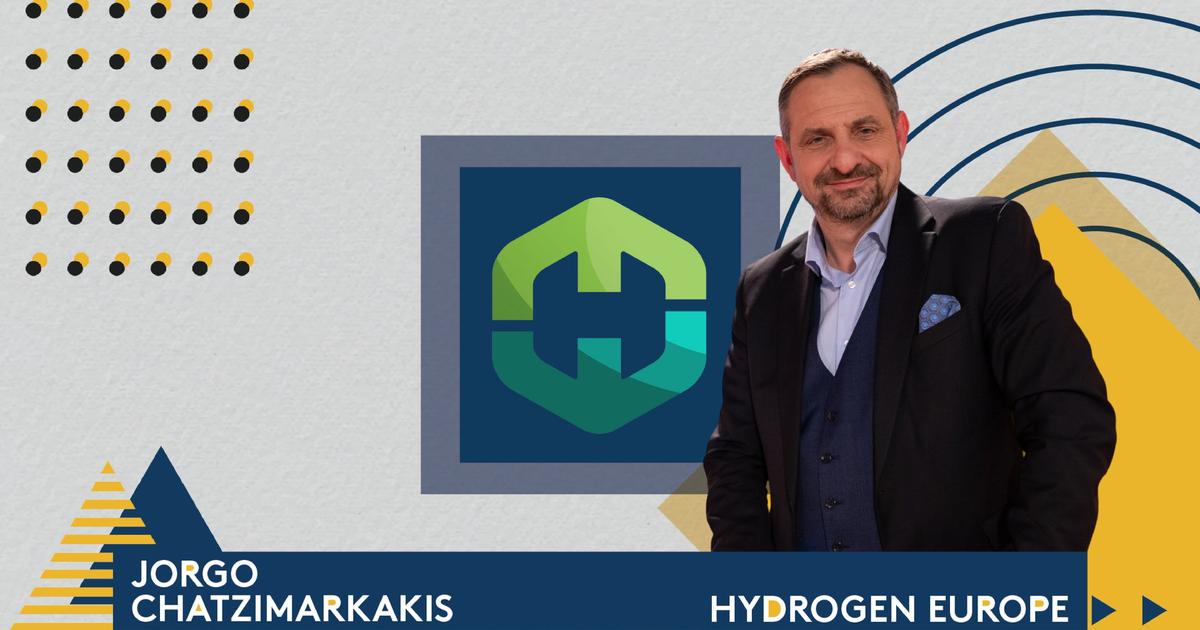Since their launch in 2017, they have done more than travel around the world on this green and renewable energy laboratory boat.
They refined the technology.
Until May 30, part of the Energy Observer team is at the foot of the Eiffel Tower to promote hydrogen mobility solutions to the public and to decision-makers, and "to show concretely what the industry is producing today" hui ”, we explain.
This weekend, but also the next, the village presents the existing transport: scooter, bicycle, taxi, bus or refrigerated semi-trailer.
And those of the future, such as the Alstom hydrogen train and the Airbus plane.
Visitors can also try the Toyota Mirail or two-wheelers.
Then, this Tuesday, at 10:30 p.m., a sound and light will be projected on the Eiffel Tower.
Read also France wants to dope with hydrogen
“This energy is one of the vectors of the ecological transition,” explains the team.
It is complementary, for example, to batteries which do not meet all uses.
But for that, it must be carbon free.
And projects must develop.
"
Different processes to produce hydrogen
This is because hydrogen is not extracted from the ground like petroleum.
It is either made from natural gas or coal.
But this type of production releases a large amount of CO2.
It can also come from electrolysis: a process which, thanks to an electric current, dissociates the hydrogen from the oxygen naturally present in the water.
Here again, with electricity of nuclear origin, coal or from renewable sources, as on the Energy Observer boat.
This autonomous vessel (here in San Francisco) creates the energy it needs, thanks to solar, wind and tidal power.
The surplus is transformed into hydrogen thanks to an electrolyser, then if necessary, into electricity thanks to a fuel cell.
Energy Observer Productions
Autonomous, the latter uses wind, solar and tidal energy (sea currents) to create the electricity it needs.
If it generates too much of it, it transforms it into hydrogen thanks to the electrolyser with which it is equipped.
And when there isn't enough of it, it goes the other way, and like in a hydrogen electric car, turns the hydrogen into electricity using a fuel cell and releases water into the oceans.
"It's pure, we can drink it!"
», Assures the crew.
In the igloos of Champ-de-Mars, these two machines are also on display as well as the adventures of the “Energy Observer” boat.
Innovations created over time
This floating laboratory has also made it possible to create and refine the technology. “With Toyota, for example, we have been able to develop a hydrogen engine for catamarans and yachts,” explains Vincent. And during the Paris Olympics in 2024, two shuttles, which are equipped with them, will circulate in the port of Marseille (Bouches-du-Rhône) and on the Seine, in Paris. In order to supply them, two floating stations will produce hydrogen with water from the Seine or the sea.
These thousands of nautical miles have also made it possible to design an "electrohydrogen" group.
Unlike the generator, it does not work with diesel or gasoline, but, as we can imagine, with hydrogen supplied here by Air Liquide.
It is this electrohydrogen group that will allow the sound and light of the Eiffel Tower: “It is a symbol of the energy transition.
For the first time in its history, it will be illuminated using entirely renewable energy, ”he says.
Energy Observer Developments participated in the development of this generator.
DR
Still little known, this resource has nevertheless experienced a revival in recent years, as evidenced by the State's budget of 7 billion in particular to make it greener. In Ile-de-France, a fleet of a few hundred hydrogen vehicles, the Hype taxis, is already in circulation. Air Liquide's Roissy and Orly stations can distribute between 250 and 400 kilos per day. A car consumes about 1 kg per 100 km.
Projects for production or distribution stations are also emerging.
In the industrial area of Port-Jérôme in Normandy, an Air Liquide large-scale electrolyser complex should be created.
In Ile-de-France, “H2 Créteil” provides for the production of electricity from waste from the treatment plant in this city of Val-de-Marne, which will then be transformed into hydrogen.
Suez hopes to produce one ton per day by 2022.
"The Paris of hydrogen" is open to the public
the
e Sunday, May 23 and 29 and 30 May from 10:30 to 18:30.
Illumination on the Eiffel Tower, Tuesday May 25 at 10:30
p.m.
, broadcast live on the
Energyobserver
Instagram account











/cloudfront-eu-central-1.images.arcpublishing.com/prisa/KMEYMJKESBAZBE4MRBAM4TGHIQ.jpg)


